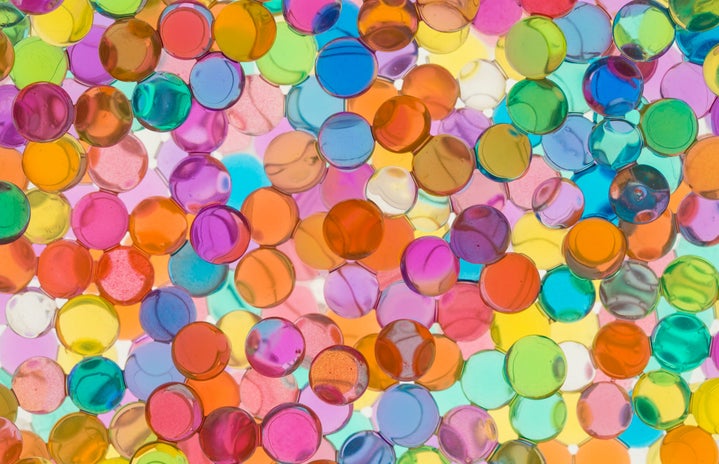Have you ever noticed that there is a strong correlation between the weather and your emotional state? If so, you may be suffering from seasonal depression. Seasonal depression, also referred to as seasonal affective disorder (or SAD for short), is a type of depression disorder where the symptoms tend to be caused by the weather patterns. Since the seasons run on a pretty consistent cycle, people with SAD’s symptoms tend to worsen at the same time of year. It is more likely found that SAD tends to affect people during the beginning of fall and lasts until the beginning of spring, but some people have their SAD affect them during summer months as well.
Like most mental disorders, no two people with SAD have the exact same experiences. However, there are some common symptoms that you should be on the lookout for in case this sounds like something you may be dealing with. These symptoms include losing interest in activities you used to enjoy, having low energy, having difficulty concentrating, having trouble sleeping and dramatic changes in your appetite.
While the most viable option for treating this is to get professional psychological treatment, this isn’t always available to everyone. There is no absolute “cure” for something like SAD, but there are some things that I do in my everyday life to lessen the symptoms to the best of my ability. I am by no means an expert, and I can only speak from personal experiences, but I hope that these reminders and tips can be useful to anyone who may need them. Aditya VyasPhoto courtesy of (@aditya1702) on unsplash.com
Try and Keep a Healthy Lifestyle
One of the common symptoms of SAD is a craving for more sugary and carbohydrate-based foods. While it is easy to give in to these temptations, ensuring that you are giving your body the nutrients it needs can help boost your mood and energy levels. Of course on days when even eating is a battle, putting anything into your body is the best option. Try to do the best you can. Drink plenty of water and eat fruits and vegetables when you can. The same goes for keeping up a good workout schedule. When you can, it’s best to try and go to the gym and exercise for around 30 minutes to an hour. If you can get yourself into a daily routine, there is a more likely chance that you’ll stick with it. You don’t have to do anything too rigorous, a simple walk or small dance party can do the trick when you can’t make it to the gym.
Take Advantage of Whatever Light You Can Find
As previously stated, it is more likely that SAD affects a person through the winter months. This is because of the colder temperatures and the lack of sunlight present throughout the day. I have found it helpful to take in as much light as possible to keep myself productive, whether it’s taking a walk in the early morning, opening up my shades or turning on my fairy lights after the sun has gone down. I am finding new ways to ensure I am exposing myself to as much light as possible to stay on a healthy sleep schedule daily. There is no time frame for figuring out what works best for you.
Photo courtesy of Serkan Turk on Unsplash
Don’t Be Hard on Yourself
With any mental illness, it can be hard to accept that your brain doesn’t work in a “normal” way. This can lead to thoughts of self-hatred, which cause further damage. No matter what form of treatment you choose or for how long you do it, there will always be bad days. Unfortunately, it’s just the way these things go. On days when it seems impossible to get out of bed or you don’t have the energy to hang out with your friends, no matter how much you want to, it’s important to remember that you are not in control of your illness. Beating yourself up over something you don’t have a say in doesn’t do any good.
Remember that You are Not Alone
Is this statement a cliche? Absolutely. Does that make it any more untrue? Absolutely not. More often than not, I am a victim of letting my mental state affect how I think the world sees me. When I’m in my darkest places, I have to remind myself that no matter what I may be feeling, there are people in this world who love me. While I may be the only one that carries around my individual burden every single day, there are so many people in line to help when I am ready to ask for it. I consider myself to be incredibly lucky to have the support system that I do. Everyone may not understand what I’m going through, but a number of them will do whatever they can to be there for me. Don’t be afraid to reach out for reassurance or for a shoulder to cry on, because chances are there are people who will gladly do both.
While the stigma around mental illnesses still exists, there is no shame in needing/getting help. Being able to properly identify a problem is the first step in working towards a solution. There is no way to be completely rid of SAD, but there are a wide variety of options in order to make every day a little easier to conquer. There will always be ups and downs, but I believe firmly in my (and your) ability to get through them all. If you would like to find out more information about SAD and how to get in contact with professional support, please visit https://www.helpguide.org/articles/depression/seasonal-affective-disorder-sad.htm.

